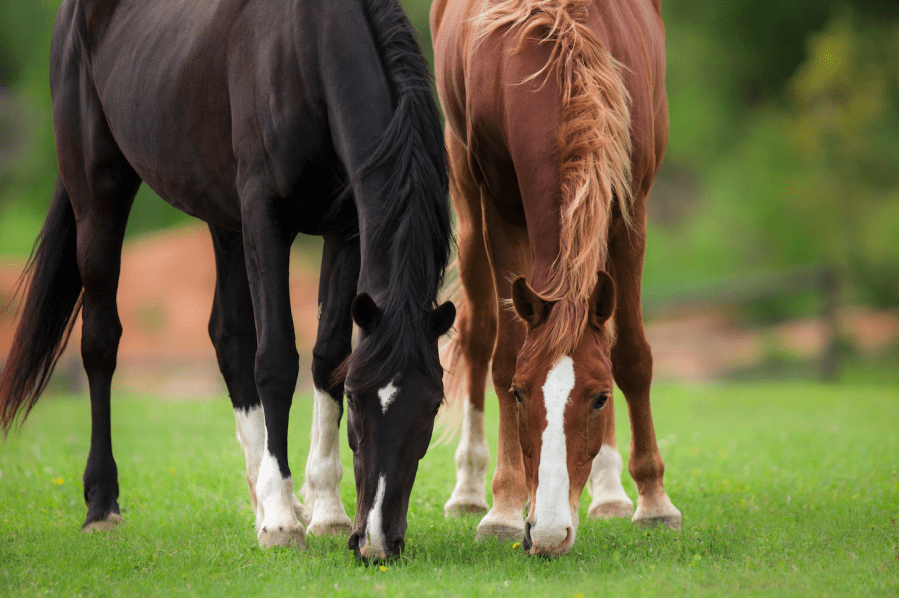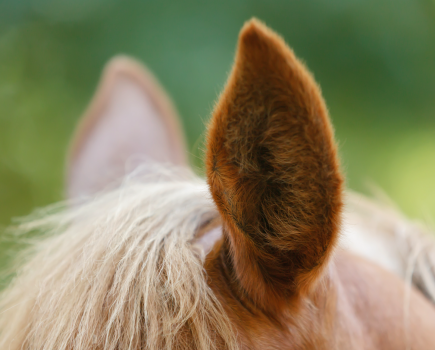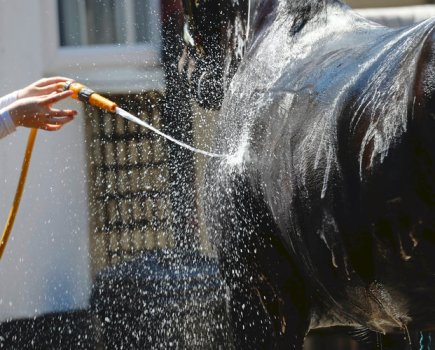Knowledge on vitamin D in horses is lacking, not only about how equines obtain the nutrient from different sources and how effective each source is, but also about how much is necessary to sustain their normal functions and keep them in good health.
However, we do know that the level of vitamin D in a horse’s body is affected by their diet.
Vitamin D levels become reduced in humans during the winter months as we tend to spend less time outside and our skin is usually covered up.
These factors combined with reduced levels of ultraviolet light from the sun results in much lower levels of vitamin D production through the skin cells.
While similar vitamin D deficiencies can occur in animals, it is not something that we tend to see in horses.
The role of vitamin D
Often known as the ‘sunshine vitamin’, vitamin D has a number of important roles in the body and is closely associated with calcium and parathyroid hormone to ensure that calcium and phosphorus are absorbed from the intestines and kidneys.
The absorption of these minerals plays a crucial part in growing and maintaining teeth and bones, as well as other tissues such as muscle.
Because vitamin D is used for a multitude of different functions in the body, as well as for maintaining the integrity of the skeleton, it is an important nutrient that the body cannot live without.
Severe problems can occur if the body becomes deficient in vitamin D, the most common in people being rickets, which results in weak bones.
It is thought that horses have a different mechanism for controlling calcium, phosphorus and vitamin D in their bodies than humans.
Compared to other animals, horses have a lower level of vitamin D and a higher level of calcium in their blood; they then excrete the excess calcium in their urine, which is why it appears cloudy.
Where it comes from
There are two sources of vitamin D: sunlight and diet.
When the skin is exposed to ultraviolet light from the sun, a chemical reaction occurs which produces vitamin D, which is then stored in fat until needed.
As vitamin D is stored in its inactive form in the fat cells, it needs to be processed by the liver and kidneys before the body can use it.
Human foods that contain vitamin D include fish and dairy products. Luckily for horses, vitamin D is found in grass, which may be increased further when it is dried in sunlight to make hay.
All horses should receive good quality forage as the bulk of their diet. A balancer should also be provided to ensure that the horse receives vital vitamins and minerals.
If your horse’s diet is supplemented with oil, then this will be a further source of vitamin D. However, it is important not to over-supplement vitamin D, as it can be toxic at higher levels.
Seasonal influences
Time of year doesn’t seem to play a part in lesser or greater vitamin D uptake in horses. During winter, not only are the days shorter but ultraviolet light from the sun is reduced.
However, studies have been carried out looking at vitamin D levels in horses from different geographical areas and no significant differences have been found.
It has also been found that horses exposed to long hours of sunlight can still have lower levels of vitamin D than other animals.
These factors make it more likely that horses gain most of their vitamin D from the diet and are less susceptible to reduced sunlight than we are.
Horses are not the only ones that have evolved in this way — animals living in areas with low levels of sunlight, such as polar bears and naked mole rats, also seem to obtain much of the nutrient from their diet.
Signs of deficiency
Interestingly, the level of vitamin D in a horse’s blood has been found to be lower than the levels at which disorders such as rickets occur, suggesting a difference in the need for or function of vitamin D in horses.
This might be related to the differences in calcium management and how the mineral is involved with vitamin D uptake and regulation. Rickets has been seen in other domestic animals, but not horses.
However, diets that are low in calcium or high in phosphorus can affect the parathyroid hormone and vitamin D production in the body, which can result in a condition called secondary hyperparathyroidism.
This condition has been seen in horses with poor diets in developing countries and the signs include lameness, swelling of the bones in the face, weight loss and loose teeth.
Impact of fly masks and rugs
Vitamin D is produced when ultraviolet light contacts the skin, and in humans the levels produced can be affected by skin colour, clothing, geographical location and genetics.
We might therefore assume that horses living in countries with less sunlight, horses with thick hair or dark skin, or those wearing rugs would have lower levels of vitamin D in their bodies.
However, this has not been the case in studies, suggesting that the main source of vitamin D for horses is from their diet. Therefore, fly masks and rugs are not likely to have a significant impact on a horse’s vitamin D levels.
Main image © Shutterstock









